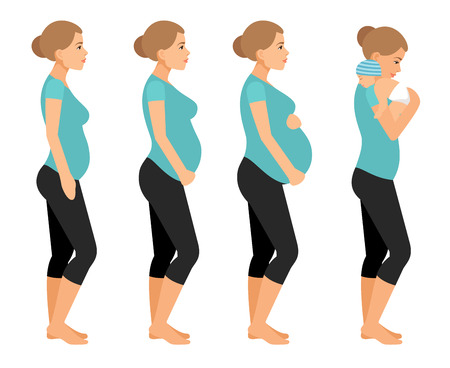1. Understanding LATCH and Seatbelt Installations
When it comes to keeping our little ones safe on the road, understanding the basics of car seat installation is crucial. In the United States, two primary methods are used to secure child safety seats: the LATCH system (Lower Anchors and Tethers for Children) and the vehicles seatbelt. The LATCH system was introduced to simplify car seat installation and make it easier for parents and caregivers to achieve a secure fit. It consists of built-in anchors in both the vehicle and the car seat itself—lower anchors located in the back seat, and top tether anchors behind or above the seat. On the other hand, seatbelt installations use your car’s existing seatbelt system to fasten the car seat in place, threading the belt through specific paths on the car seat as directed by its manual.
Both methods aim to protect children by minimizing movement during a crash, which is why using either method correctly is so important. While many families might wonder if one is safer than the other, its essential first to know how each works—and why choosing the right installation method matters so much for your child’s safety. With proper use, both LATCH and seatbelt installations can offer excellent protection, but there are key differences that every parent should be aware of as they choose the best option for their family’s needs.
Safety Standards and Recommendations in the United States
When it comes to keeping our children safe on the road, understanding the safety standards and recommendations in the United States is essential. Both LATCH (Lower Anchors and Tethers for Children) and seatbelt installations are designed with strict federal guidelines in mind, but how do these standards translate into everyday practice? Let’s explore what government agencies, car seat manufacturers, and pediatric experts recommend for families navigating these important choices.
Federal Safety Guidelines
The National Highway Traffic Safety Administration (NHTSA) sets rigorous federal requirements for all car seats sold in the U.S. Whether you’re using LATCH or a seatbelt, every car seat must pass crash tests and meet performance criteria. The NHTSA emphasizes that both installation methods are safe when used correctly. However, they also note that improper installation—regardless of method—can put children at risk. It’s a gentle reminder that careful attention matters as much as the choice between LATCH and seatbelt.
Car Seat Manufacturer Instructions
Manufacturers provide specific instructions for each car seat model. These instructions will indicate whether LATCH or seatbelt is recommended, and sometimes even specify weight limits for each method. For example, many car seats have a maximum weight limit (child plus car seat) for using LATCH anchors, after which installation by seatbelt is required. Here’s a simple comparison to help:
| Installation Method | Manufacturers Guidance |
|---|---|
| LATCH | Often recommended for ease of use; check weight limits (usually 65 lbs combined child & seat) |
| Seatbelt | Required if child + seat exceed LATCH weight limit; always an option in any seating position with a belt |
Expert Recommendations: American Academy of Pediatrics (AAP)
The AAP gently encourages parents to focus less on which method is “better” and more on ensuring proper installation. Their guidance echoes a reassuring message: both LATCH and seatbelt systems are effective when used according to directions. They advise families to read both their vehicle owner’s manual and the car seat manual carefully before deciding which method to use. If ever in doubt, reaching out to a certified Child Passenger Safety Technician can provide peace of mind.
A Family-Centered Approach
Navigating these guidelines can feel overwhelming, but remember—you’re not alone. Federal standards, clear manufacturer instructions, and expert guidance are all there to support your family’s journey. Taking the time to understand and follow these recommendations is one of the most loving things you can do for your child’s safety.

3. When to Use LATCH vs. Seatbelt
Choosing between LATCH (Lower Anchors and Tethers for Children) and seatbelt installation isn’t just about convenience—it’s about keeping your child as safe as possible in every ride. The best choice often depends on your vehicle, your child’s weight, and the type of car seat you’re using. Let’s break down when each method is preferred or even required, so you can make the safest decision for your family.
Vehicle Age and Compatibility
If you drive a car made after September 2002, it likely has the federally mandated LATCH system built-in. For older vehicles, the seatbelt method may be your only option, as they might not have the necessary anchors for LATCH installation. Always check your vehicle owner’s manual for specifics—some cars only have LATCH in certain seating positions.
Child’s Weight Limits Matter
LATCH is designed with specific weight limits in mind. Most car seats recommend using LATCH only if the combined weight of your child and their car seat is under 65 pounds (check your car seat manual for exact numbers). If your child plus their seat weighs more than that, switch to the vehicle’s seatbelt for installation—it’s tested to handle higher forces during a crash.
Car Seat Type Influences Choice
Some infant carriers with bases are easiest to install using LATCH, while convertible and booster seats may work better with a seatbelt, especially as your child grows. Certain booster seats require a seatbelt and do not allow installation with LATCH at all. Always refer to both your car seat manual and vehicle guide to understand which methods are allowed for your specific setup.
Special Scenarios: When Either Is Acceptable
In some cases, both LATCH and seatbelt installations are equally safe if done correctly, but never use both methods at the same time unless specifically permitted by both manufacturers. Pick the method that gives you the tightest fit—a secure car seat shouldn’t move more than an inch side-to-side or front-to-back when installed properly.
Final Thoughts for Parents
The right installation method can change as your child grows or if you switch vehicles or car seats. Don’t hesitate to consult certified Child Passenger Safety Technicians (CPSTs) or local inspection stations—they’re there to support you on this journey and help you feel confident every time you buckle up your little one.
4. Common Installation Mistakes—and How to Avoid Them
When it comes to installing car seats, even the most caring and attentive families can make mistakes. Whether you choose LATCH or seatbelt installation, understanding where things often go wrong is an important step toward keeping your little ones safe. Below, lets highlight some of the most common errors—and offer gentle, practical tips to help you avoid them.
Common Mistake |
LATCH Installation |
Seatbelt Installation |
How to Avoid |
|---|---|---|---|
| Loose Install | Not tightening straps enough so the car seat moves more than 1 inch side-to-side or front-to-back. | Not locking the seatbelt properly, leading to extra slack. | After installation, firmly shake the base at the belt path—if it moves more than 1 inch, tighten further. |
| Incorrect Belt Path Used | Attaching LATCH connectors to the wrong anchors (e.g., center seat not always approved). | Threading the seatbelt through the wrong path for rear-facing vs. forward-facing seats. | Double-check your car seat manual for correct anchor and belt path usage every time you install. |
| LATCH & Seatbelt Used Together (When Not Allowed) | Using both methods at once unless specifically permitted by both car seat and vehicle manuals. | Most car seats require you to use one method only—always check your manuals before combining! | |
| Loose Harness Straps | Harness straps are too loose on your child, regardless of installation method. | The harness should be snug with no slack—you shouldn’t be able to pinch any webbing at the shoulder. | |
| LATCH Weight Limit Exceeded | Continuing to use LATCH after your child exceeds the combined weight limit for LATCH set by your vehicle and car seat manufacturers. | Once your child reaches this limit (often 65 lbs combined), switch to a seatbelt installation for continued safety. | |
Gentle Reminder: Take your time with every install—rushing often leads to missed steps. Many communities in the U.S. offer free car seat inspection stations where certified technicians can double-check your work and answer questions without judgment. Its always okay to ask for help; after all, ensuring your childs safety is a team effort. And remember: every family makes mistakes sometimes—the important thing is learning and growing together on this journey of parenthood!
5. Real-Life Considerations for American Families
When it comes to choosing between LATCH and seatbelt installation, the decision isnt always straightforward for busy American families. Life on the go brings unique challenges—from shuttling kids to soccer practice, carpooling with neighbors, or even renting a vehicle for a family road trip. These everyday scenarios highlight the importance of flexibility and understanding how each installation method works in real-life situations.
Many parents share stories of switching car seats between vehicles, especially when grandparents or friends help with pickups. For some, LATCH feels more intuitive and quicker to use, especially when youre juggling groceries and wrangling little ones in a parking lot. On the other hand, there are times when a vehicle’s LATCH anchors aren’t compatible with a particular car seat, or your child has outgrown the weight limit for LATCH use—leaving seatbelt installation as the safest option.
Rental cars can add another layer of complexity. Not every rental is equipped with clearly marked LATCH anchors, and you may not have time to thoroughly review the manual while rushing through an airport with tired kids in tow. In these moments, knowing how to confidently install a car seat with a seatbelt becomes invaluable and helps ensure your child’s safety regardless of the situation.
Families also find that carpooling often means adjusting to different vehicles where not everyone knows how to use LATCH or seatbelt installations correctly. Some parents have found peace of mind by practicing both methods at home so they feel prepared no matter what car they’re using. Sharing these experiences within local parenting groups or at school events helps build a supportive community where safety tips and tricks are passed along—because at the end of the day, every parent wants their child to be secure on every ride.
By understanding both LATCH and seatbelt installation—and being aware of each method’s strengths and limitations—families can adapt quickly, making sure their precious cargo is always protected as life moves from one adventure to the next.
6. Expert Tips for Safe and Simple Car Seat Installation
When it comes to choosing between LATCH and seatbelt installation, parents and caregivers often want clear guidance to make the safest choice for their children. While both methods, when used correctly, are considered equally safe by experts, proper installation is key. Here are some expert-backed tips, practical advice, and resources to help you feel confident every time you buckle up your precious cargo.
Get Familiar With Your Vehicle and Car Seat Manuals
Every car seat and vehicle has its own set of instructions—these are your best friends on this journey. Take time to read both manuals thoroughly. They’ll guide you on where the LATCH anchors or seatbelt paths are located, weight limits, and specific recommendations from manufacturers.
Use the Method That Gives You the Best Fit
Sometimes the LATCH system gives a snugger fit; other times, the seatbelt does the trick. It’s okay to try both methods (but never use them together unless your car seat manual says it’s allowed). Whichever method results in less than one inch of movement side-to-side or front-to-back at the belt path is your winner.
Double-Check Weight Limits
LATCH systems have weight limits that include both your child and their car seat. Once you hit that limit (usually 65 pounds combined), switch to seatbelt installation for continued safety.
Helpful Resources for Caregivers
- The National Highway Traffic Safety Administration (NHTSA.gov) offers reliable guides and videos.
- Safe Kids Worldwide (safekids.org) can help you find certified Child Passenger Safety Technicians (CPSTs) who offer free local inspections and hands-on help.
Encouragement for Everyday Rides
Remember, every parent wants what’s best for their child. If you ever feel unsure, don’t hesitate to reach out for support—whether it’s calling a CPST or visiting a local inspection event. With a little practice and patience, installing your child’s car seat can become second nature, ensuring every family adventure starts with peace of mind and loving care.

